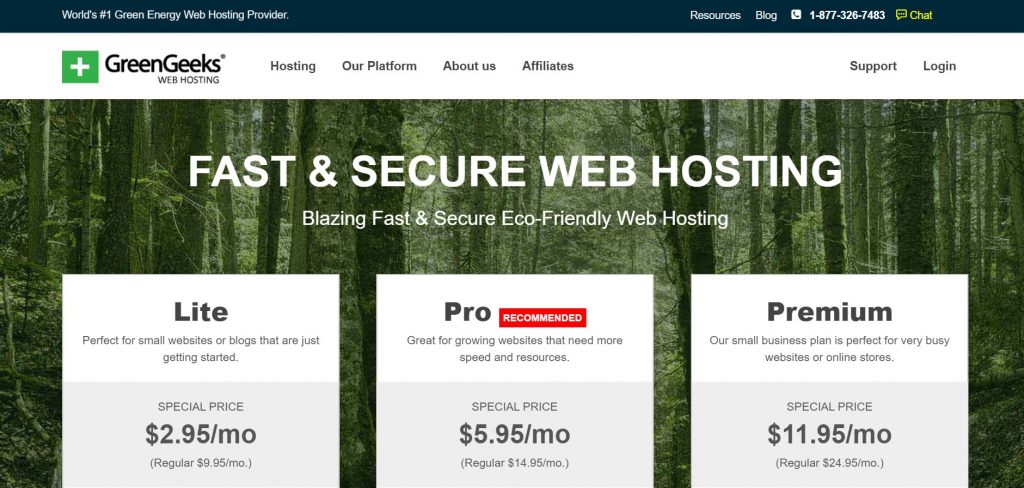
Websites create carbon footprints. This statement is a fact, a surprising fact that is not quite known by many. Currently, the internet produces roughly 800 million tons of carbon dioxide ANNUALLY. Can we still save the planet through sustainable web design?
Greenhouse gases are created both by the internet and telecommunications companies, and they do so in monstrous amounts. This is a fact supported by research from the American Chemical Society. According to the American Chemical Society, the internet and telecommunications companies create 2% of the total greenhouse gas emissions in the world.
There should be no question why and how the internet creates so much carbon footprint. Just imagine how much electricity internet usage produces for each household all over the world every day. Take note, this is only from the receiving end. Add this to the electricity used up by the front end – servers, content creators, web designers, and more.
How come nobody seems to be too concerned about this number? It may be attributed to the lack of interest among many people, on the user’s end of the internet. The reduction of carbon footprint does not seem to be an individual priority. The best way to reduce the internet’s carbon footprint is to target the source – websites. A huge chunk of the 800 million tons of carbon emission can be attributed to the energy wasted on slow websites. Website design plays an important factor in creating a more sustainable internet.
Here are different ways of how web designers can save the planet through sustainable web design:
Optimizing Website Speed
A good majority of the 800 million tons of carbon emissions discussed are from wasted energy from slow websites. The longer a website loads, the screentime is used by a user. This, in turn, uses up more energy than visiting a faster website. Improving the performance of the webpage significantly reduces the consumption of energy and reduces the production of carbon dioxide.
This could also be correlated to the findability of a website. Fewer pages that need to load leads to fewer server requests. The goal of sustainable web design, even data analytics, is to reduce the amount of time a user spends on the search engine. Both sustainable web design and data analytics focus on reducing the likability that they reach beyond the first page of the search engine.
Creating a Page Size LIMIT
The first way to create a greener webpage does focus on optimizing website speed. However, the users’ demands for a more aesthetically pleasing web design may prove to be counterintuitive. Colorful images, interactive banners, awe-inspiring sliders – these are just some of the elements that make a website appealing to the eyes. Removal of unnecessary elements increases the loading ability of a webpage. How is it possible to create a faster website if there are so many artistic design requirements? There is only one way to do this right – creating a page size limit.
It may take more than a considerable amount of energy to download or view a webpage of considerable size. The ideal web page download speed is roughly two to three seconds. A webpage that has a size of about 2.0MB takes around 8 to 10 seconds to load. This may mean that reducing a web page size considerably lower than 2.0MB may be needed to create a faster webpage. The good thing is that the page size limit combined with all other methods may be considered in significantly reducing web page load times.
Looking for a Greener Web Host
These are servers or web hosts whose main priority is to provide quality service paired eco-friendly initiatives. This is to help in the mitigation of the environmental effects of the internet’s energy consumption. One way to create a greener web hosting service is to focus on the usage of renewable energy. Also, there are companies that use reclaimed water for cooling plants for their data centers. Not only are they users of renewable energy, but these companies are also supporters of renewable energy production. The great thing is that there are a number of green web hosts available throughout the globe.

Green Geeks is one of the most popular sustainable web hosts on the internet. Image Source: Green Geeks
Prioritizing Mobile Websites
Creating a mobile website first may be more sustainable than creating both a mobile-ready website and a browser webpage. This is because there are more mobile users now than PC. Focusing on building mobile websites reduces complexity in User Experience design. Not only that, mobile web page sizes are considerably smaller and thus loads much faster. This reduces interaction with server which then leads to less energy consumption. On the users’ end, mobile websites are better to use because of faster download times. It proves to be more cost-effective and has a wider range than normal browser web pages. Not only is this better for the data analytics of a website but it is also better for the environment.
Also read: How to Start a Successful Career in Web Design in 2020
The post Save the Planet Through Sustainable Web Design appeared first on SpyreStudios.















